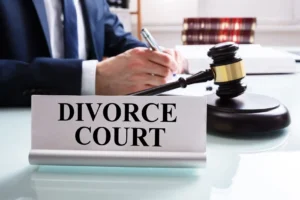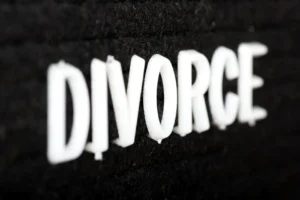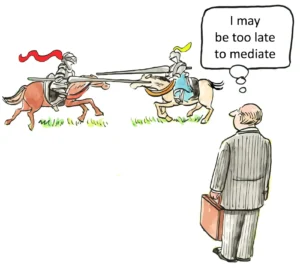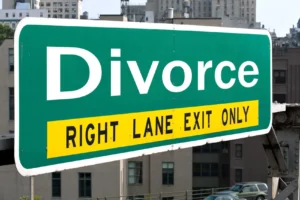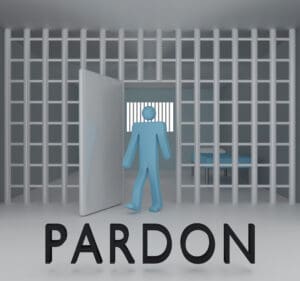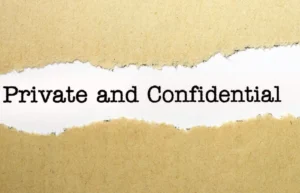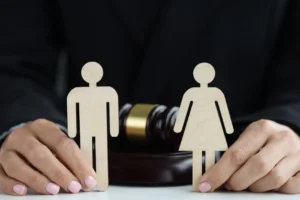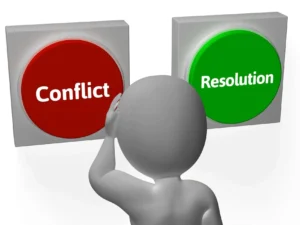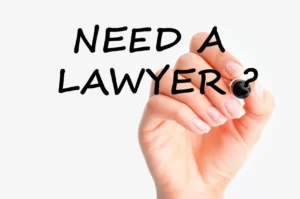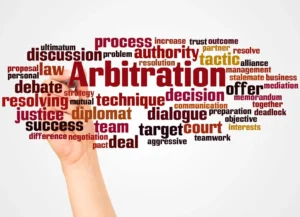The statute of limitations is a fundamental legal concept that establishes time limits for initiating legal proceedings. These statutes serve as a critical mechanism in the justice system, balancing the rights of potential plaintiffs to seek redress with the need for legal certainty and finality. Understanding the nuances of statutes of limitations is essential for both legal practitioners and the general public, as these time limits can significantly impact the ability to pursue legal claims.
At its core, a statute of limitations sets a maximum time period after an event within which legal proceedings may be initiated. Once this period expires, unless an exception applies, a claim can no longer be filed, and the potential defendant is essentially immune from legal action related to that particular event or offense. The rationale behind these statutes is multifaceted, encompassing considerations of fairness, efficiency, and the preservation of evidence.
One of the primary justifications for statutes of limitations is the notion that, with the passage of time, evidence may deteriorate or be lost, memories may fade, and witnesses may become unavailable. These factors can significantly impair the ability to conduct a fair trial and ascertain the truth of allegations. By imposing time limits, the legal system encourages prompt action while evidence is still fresh and available, thereby promoting more accurate fact-finding and just outcomes.
Moreover, statutes of limitations provide a measure of repose and certainty for potential defendants. Without such limits, individuals and entities might face the perpetual threat of legal action for past events, creating a state of ongoing uncertainty that could hinder personal and economic activities. The statutes thus strike a balance between the interests of plaintiffs in pursuing valid claims and the societal interest in allowing people to move forward without indefinite exposure to potential litigation.
The specific time limits prescribed by statutes of limitations vary widely depending on the jurisdiction and the nature of the legal action. In the United States, these statutes are generally established by state law, although federal law governs certain types of claims. The duration can range from as short as one year for some types of claims to as long as ten years or more for others. Some particularly serious offenses, such as murder, may have no statute of limitations at all.
Civil statutes of limitations typically apply to non-criminal legal actions, including tort claims, contract disputes, and property matters. For instance, personal injury claims often have a statute of limitations of two to three years, although this can vary by state. Contract claims may have longer periods, with many states allowing up to six years for actions based on written contracts. Property-related claims, such as those involving real estate, may have even longer limitation periods.
The complexity of civil statutes of limitations is illustrated by the variations across different types of claims and jurisdictions. For example, in California, the statute of limitations for personal injury claims is generally two years from the date of injury. However, for breach of written contract claims, the limitation period extends to four years. In contrast, New York allows three years for personal injury claims and six years for breach of contract actions. These variations underscore the importance of understanding the specific laws applicable to a given case and jurisdiction.
Criminal statutes of limitations operate somewhat differently from their civil counterparts. These statutes limit the time within which prosecutors can bring criminal charges against a suspect. The rationale behind criminal statutes of limitations includes considerations of fairness to the accused, the need for prompt investigation and prosecution, and the recognition that the deterrent effect of punishment diminishes over time.
In the realm of criminal law, the severity of the offense often correlates with the length of the statute of limitations, if one exists at all. Minor offenses, such as misdemeanors, typically have shorter limitation periods, often ranging from one to three years. More serious felonies may have longer periods, extending to five years or more. As mentioned earlier, certain grave offenses like murder, war crimes, or sexual offenses against minors may have no statute of limitations, allowing prosecution to occur at any time.
The application of statutes of limitations is not always straightforward, and various legal doctrines have developed to address complex scenarios. One such concept is the discovery rule, which can affect when the statute of limitations begins to run. Under this rule, the limitation period may not start until the plaintiff discovers, or reasonably should have discovered, the injury or violation giving rise to the claim. This doctrine is particularly relevant in cases involving latent injuries, fraud, or other situations where the harm may not be immediately apparent.
The discovery rule has been particularly significant in medical malpractice cases, where injuries resulting from negligent medical treatment may not manifest until years after the treatment occurred. In such cases, strictly applying the statute of limitations from the date of the medical procedure could unfairly bar legitimate claims before the patient even becomes aware of the injury. The discovery rule allows for a more equitable approach, giving plaintiffs a fair opportunity to pursue their claims once they become aware of the harm.
Another important concept in the application of statutes of limitations is tolling. Tolling refers to the pausing or delaying of the running of the limitation period under certain circumstances. Various factors can lead to the tolling of a statute of limitations, including the plaintiff’s minority status, mental incapacity, or the defendant’s absence from the jurisdiction. For example, many jurisdictions toll the statute of limitations for minors until they reach the age of majority, recognizing that children may not have the capacity to understand or pursue their legal rights.
Tolling can also occur in cases where the defendant actively conceals the wrongdoing or takes steps to prevent the plaintiff from discovering the cause of action. This principle, sometimes referred to as “fraudulent concealment,” is based on the idea that a defendant should not be allowed to benefit from their own misconduct in hiding their wrongful actions.
The concept of equitable tolling provides courts with some flexibility to extend statutes of limitations in exceptional circumstances where strict application of the time limit would be unfair. This doctrine allows courts to toll the statute of limitations when extraordinary circumstances prevented the plaintiff from asserting their rights in a timely manner, despite their diligent efforts to do so. Equitable tolling is applied sparingly and typically requires the plaintiff to demonstrate that they pursued their rights diligently and that some extraordinary circumstance stood in their way.
In recent years, there have been significant developments and debates surrounding statutes of limitations, particularly in the context of certain types of claims. One area of notable change has been in cases involving sexual abuse, especially those involving minors. Many jurisdictions have extended or eliminated statutes of limitations for such cases, recognizing the unique challenges victims face in coming forward and the long-lasting impact of these crimes.
For instance, in 2019, New York State enacted the Child Victims Act, which significantly extended the statute of limitations for child sexual abuse cases. The law created a one-year window during which victims could file civil lawsuits against their abusers, regardless of when the abuse occurred. This window was later extended due to the COVID-19 pandemic. Similar legislation has been passed in other states, reflecting a growing recognition of the need for extended time frames in these sensitive cases.
The advent of DNA evidence has also led to reconsideration of statutes of limitations in certain criminal cases. As DNA technology has advanced, it has become possible to solve crimes years or even decades after they were committed. In response, some jurisdictions have extended or eliminated statutes of limitations for certain serious offenses when DNA evidence is available. This approach allows prosecutors to pursue cases that might otherwise be time-barred, while still maintaining some temporal limits on prosecution.
The intersection of statutes of limitations with technological advancements extends beyond DNA evidence. In the digital age, new forms of evidence and new types of crimes have emerged, challenging traditional notions of when a cause of action accrues or when a crime is discovered. For instance, in cases of cybercrime or digital fraud, determining the start date for the statute of limitations can be complex, as the effects of these crimes may not be immediately apparent or may occur over an extended period.
International law and cross-border litigation present additional complexities in the application of statutes of limitations. Different countries may have vastly different limitation periods for similar types of claims, leading to potential conflicts in international disputes. The question of which jurisdiction’s statute of limitations should apply can be a critical and contentious issue in such cases. International treaties and conventions, such as the United Nations Convention on the Limitation Period in the International Sale of Goods, have sought to provide some uniformity in this area, at least for certain types of commercial disputes.
The COVID-19 pandemic has also had significant implications for statutes of limitations. The widespread disruptions caused by the pandemic led many jurisdictions to implement emergency measures tolling or extending statutes of limitations. These measures were designed to protect the rights of potential plaintiffs who might have been unable to file timely claims due to court closures, health concerns, or other pandemic-related obstacles. As the legal system continues to grapple with the aftermath of the pandemic, questions about the long-term impact of these emergency measures on statutes of limitations remain.
In the realm of civil litigation, the interplay between statutes of limitations and class action lawsuits presents unique challenges. Class actions often involve claims that have accrued over extended periods and may include class members whose individual claims would be time-barred if brought separately. Courts have grappled with how to apply statutes of limitations in these contexts, balancing the efficiency of class-wide resolution with the rights of defendants to be free from stale claims.
The doctrine of continuing violations has emerged as an important concept in certain areas of law, particularly in employment discrimination and civil rights cases. Under this doctrine, a plaintiff may be able to recover for a series of related discriminatory acts, even if some of those acts occurred outside the statute of limitations period. The theory is that the violation is ongoing, and each new discriminatory act resets the statute of limitations clock. This doctrine can significantly extend the time frame for bringing certain types of claims, but its application is complex and often subject to intense litigation.
Statutes of limitations also intersect with broader policy considerations, such as access to justice and the efficient administration of the legal system. Critics argue that overly short limitation periods can unfairly bar meritorious claims, particularly for disadvantaged or vulnerable populations who may face barriers to accessing legal services. On the other hand, proponents of stricter time limits contend that they promote judicial efficiency, prevent the litigation of stale claims, and provide necessary certainty for potential defendants.
The debate over the appropriate balance in statutes of limitations is ongoing and evolves with changing societal values and legal norms. For example, the #MeToo movement has sparked renewed discussions about the adequacy of existing statutes of limitations for sexual harassment and assault claims. These debates highlight the tension between providing opportunities for victims to seek justice and maintaining a fair and predictable legal system.
In the context of environmental law, statutes of limitations present unique challenges. Environmental harms often manifest slowly over time, and the full extent of damage may not be apparent for years or even decades. This reality has led to calls for more flexible approaches to limitation periods in environmental cases. Some jurisdictions have adopted special rules for environmental claims, such as starting the limitation period from the date of discovery of the harm rather than the date of the polluting activity.
The application of statutes of limitations in the digital age raises new questions about data privacy and the right to be forgotten. As personal information becomes increasingly digitized and persistent, there are growing concerns about how long entities should be liable for data breaches or misuse of personal information. Some argue for extended limitation periods for data-related claims, given the long-term consequences of privacy violations. Others contend that such extensions could create unmanageable liability risks for businesses and organizations.
In the realm of intellectual property law, statutes of limitations play a crucial role in balancing the rights of creators and the public interest. Copyright infringement claims, for instance, are generally subject to a three-year statute of limitations under federal law in the United States. However, the application of this limitation period can be complex, particularly in cases of ongoing or repeated infringement. Courts have grappled with whether each instance of infringement triggers a new limitation period or whether the “discovery rule” should apply to copyright cases.
The concept of laches, while distinct from statutes of limitations, often intersects with limitation periods in equity cases. Laches is an equitable defense based on the plaintiff’s unreasonable delay in bringing a claim, even if the statutory limitation period has not yet expired. This doctrine recognizes that even within the statutory period, a plaintiff’s delay in asserting their rights can prejudice the defendant and make it inequitable to allow the claim to proceed. The interplay between laches and statutes of limitations highlights the complex considerations of fairness and timeliness in legal proceedings.
As legal systems continue to evolve, so too do approaches to statutes of limitations. Some jurisdictions are exploring more flexible or nuanced approaches to limitation periods. For example, some have proposed sliding scales based on the severity of the offense or the vulnerability of the victim. Others have suggested implementing more robust tolling provisions to account for a wider range of circumstances that might prevent timely filing of claims.
The globalization of commerce and the rise of multinational corporations have also complicated the application of statutes of limitations. In cases involving international transactions or cross-border disputes, determining which jurisdiction’s limitation period applies can be a complex legal question. This issue becomes particularly acute in cases involving human rights abuses or environmental damage caused by multinational corporations operating in developing countries.
In conclusion, statutes of limitations remain a fundamental and complex aspect of legal systems worldwide. They serve important functions in promoting legal certainty, preserving evidence, and encouraging the timely resolution of disputes. However, their application must continually evolve to address new challenges posed by technological advancements, changing societal norms, and the increasingly global nature of legal disputes. As the legal landscape continues to change, understanding and navigating statutes of limitations will remain a critical skill for legal practitioners and an important consideration for anyone involved in or contemplating legal action.
Website citations used for this article:
- https://attorneys.media
- https://www.nolo.com/legal-encyclopedia/statute-of-limitations-state-laws-chart-29941.html
- https://www.law.cornell.edu/wex/statute_of_limitations
- https://www.findlaw.com/state/accident-and-injury-laws/civil-statute-of-limitations-laws.html
- https://www.justice.gov/archives/jm/criminal-resource-manual-650-length-limitations-period
- https://www.justia.com/criminal/procedure/criminal-statutes-of-limitations-50-state-survey/
- https://www.akingump.com/en/insights/alerts/congress-extends-statute-of-limitations-for-sanctions-and-certain-other-national-security-programs-from-5-to-10-years-and-introduces-new-sanctions
- https://myguardianlaw.com/personal-injury-resources/understanding-statutes-of-limitations/
- https://www.lawinfo.com/resources/criminal-defense/criminal-statute-limitations-time-limits.html
- https://bluenotary.us/statute-of-limitations/
- https://www.thefederalcriminalattorneys.com/federal-statute-of-limitations
- https://www.clearyenforcementwatch.com/0/0/statute-of-limitations-for-u-s-sanctions-violations-extended-from-five-to-ten-years/
- https://en.wikipedia.org/wiki/Statute_of_limitations
- https://www.findlaw.com/criminal/criminal-law-basics/time-limits-for-charges-state-criminal-statutes-of-limitations.html
- https://www.findlaw.com/state/accident-and-injury-laws/civil-statute-of-limitations-laws.html
- https://www.investopedia.com/terms/s/statute-of-limitations.asp
- https://www.callaborlaw.com/entry/0-paga-reforms-has-the-landscape-changed
- https://www.law.cornell.edu/uscode/text//
- https://rainn.org/statutes-limitations
- https://www.reganlawyer.com/blog/statute-of-limitations-in-pennsylvania/
- https://rainn.org/state-state-guide-statutes-limitations
- https://legal-info.lawyers.com/research/pennsylvania/pennsylvania-statutes-of-limitations.html
- https://legal-info.lawyers.com/criminal/criminal-law-basics/pennsylvania-criminal-statutes-of-limitations.html
- https://lawsuits.org/civil-statute-of-limitations/
- https://worldpopulationreview.com/state-rankings/statute-of-limitations-by-state
- https://josephmpacellaspringfield.com/blog/criminal-statutes-of-limitations/
- https://versustexas.com/blog/federal-statutes-of-limitations/
- https://www.findlaw.com/state/statutes-of-limitations.html
- https://ogletree.com/insights-resources/blog-posts/supreme-court-generally-disapproves-of-a-discovery-rule-exception-to-federal-statutes-of-limitations/
- https://warriorsforjustice.com/legal-terms/statute-of-limitations/
- https://www.gddlaw.com/00//0/tolling-statute-limitations-mean-ca/
- https://www.law.cornell.edu/wex/statute_of_limitations
- https://biotech.law.lsu.edu/cases/medmal/gaither.htm
- https://www.angeloslaw.com/blog/0//legal-terms-you-should-know-statute-of-limitations/
- https://www.schachtelaw.com/0/0//exceptions-to-the-statute-of-limitations-the-discovery-rule/
- https://www.justice.gov/archives/jm/criminal-resource-manual–tolling-statute-limitations
- https://www.advocateweb.org/law-ethics-/state-law/statute-limitations/
- https://foundershield.com/insurance-terms/definition/tolling-a-statute-of-limitations/
- https://beresfordlaw.com/has-the-statute-of-limitations-expired-on-my-claim-consider-the-discovery-rule/
- https://corporatefinanceinstitute.com/resources/wealth-management/statute-of-limitations/
- https://en.wikipedia.org/wiki/Tolling_(law)
- https://zacharymccreadylaw.com/blog/the-discovery-rule/
- https://www.irmi.com/term/insurance-definitions/tolling-a-statute-of-limitations


